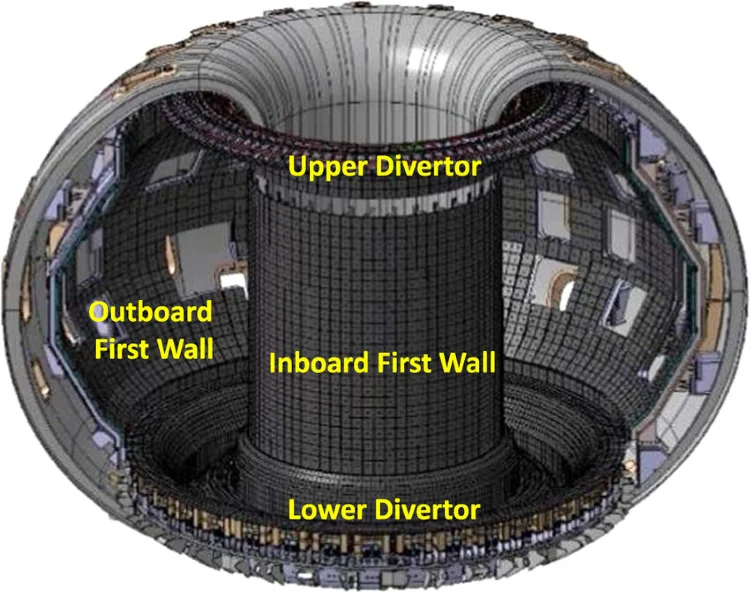In southern France, the WEST fusion reactor has marked a serious advancement towards the dream of clean, unlimited energy. It sustained a super-hot plasma for a record six minutes. This achievement edges us closer to a future powered by fusion energy, mimicking the sun’s power right here on Earth.
“What we are trying to do is create a sun on Earth,” stated Luis Delgado-Aparicio, head of advanced projects at Princeton Plasma Physics Laboratory (PPPL). “And that is extremely, extremely challenging,” he noted, emphasizing the significance of the recent success in the fusion domain.
Harnessing the Power of the Sun
Fusion, the process that fuels the sun, involves merging atomic nuclei to release massive amounts of energy—far surpassing what today’s nuclear fission reactors can achieve. If successfully harnessed, fusion could deliver nearly 4 million times more energy per kilogram of fuel than fossil fuels, and without carbon emissions.
The Role of WEST in Fusion Research
While not intended for direct electricity production, WEST’s experiments are vital for developing technologies that future commercial reactors, like the much larger ITER, will rely on. Delgado-Aparicio explains that the experiments at WEST directly inform and enhance the capabilities at ITER, which is also located in southern France and aims to be the world’s largest tokamak reactor.
Recent Milestones in Fusion Research
Here’s a quick look at recent notable achievements in nuclear fusion experiments to really put this advancement into perspective:
- 2019: Korea’s KSTAR achieves a 20-second operation at 100 million degrees.
- 2020: China’s EAST reactor sustains plasma for 100 seconds at over 100 million degrees.
- 2021: UK’s JET produces the highest fusion power output since 1997.
- 2022: SPARC, by Commonwealth Fusion Systems, uses novel superconductors to achieve field strength milestones.
- 2024: WEST sustains plasma at 90 million degrees Fahrenheit for six minutes, setting a new duration record.
In under four years, nuclear fusion went from sustaining plasma for 100 seconds to 6 minutes, that’s a 260% increase! Now that’s hopeful!

The Tungsten Breakthrough
A significant factor in WEST’s success is its use of tungsten in the reactor’s walls, chosen for its heat-resistant properties and ability to withstand the extreme conditions within the tokamak. Originally featuring carbon walls, WEST switched to tungsten in 2012 to avoid absorption of tritium, a key fuel in fusion reactions.
“Imagine you have a wall that is not only a wall, but it’s some sort of a sponge,” Delgado-Aparicio described, “a sponge that absorbs your fuel.” Tungsten, however, does not absorb tritium, making it ideal despite its challenges, such as potential contamination of the plasma if it melts.
Optimizing Fusion with Advanced Diagnostics
The PPPL team has also refined diagnostic tools to better measure and understand the behavior of tungsten within the plasma, crucial for maintaining its purity and efficiency. “We can detect how it moves inside, we can follow it, we can study its transport inside the machine,” Delgado-Aparicio explained. This knowledge is pivotal for future reactor designs and for improving operational strategies at ITER.
The Path to Commercial Fusion
More To Discover
- Why Renewables Can’t Save Our Planet And Are Actually Part Of The Problem
- Slovakia Is Repurposing Cigarette Butts into Asphalt Roads
- The Elusive Dream of Nuclear Fusion, 50 Years In The Making: But When Will It Be Ready To Power Our Homes?
- Farmers Are Shouldering The Burden: The Hidden Cost of Big Food’s Green Push & Every Way It Hits Smaller Farms
Despite the progress, the journey to commercial fusion energy remains fraught with technological and financial challenges, likely pushing its realization decades into the future. However, Delgado-Aparicio remains optimistic about the contributions of their work: “Now we understand how that cooling needs to be taken care of,” he said, confident that these insights will advance the global pursuit of fusion energy.
The results of the latest experiments from WEST are set to be published in a peer-reviewed journal soon, we’ll keep you updated.




















